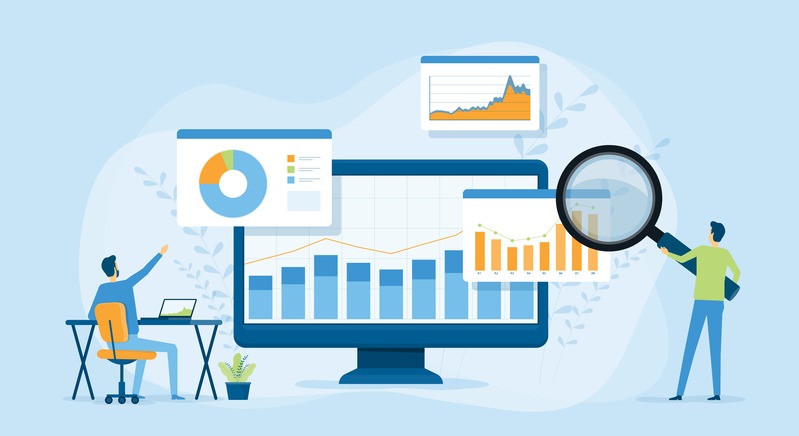
Not all businesses are taking full advantage of data and analytics to drive growth – here’s how you can leverage it and maximise your business’ sales
CREDIT: This is an edited version of an article that originally appeared on Harvard Business Review
Many SMEs in the manufacturing sector often lack clarity regarding the factors influencing their profit margins. The decision-support tools employed tend to be retrospective rather than predictive, hindering the ability to respond proactively. Furthermore, even when equipped with the right data, businesses frequently struggle to translate that data into actionable insights.
A prevailing challenge faced by numerous B2B companies is the reliance on intuition and experience to manage sales teams, often at the expense of data-driven approaches. This pattern is ingrained across commercial organisations in various industries, resulting in missed growth opportunities that data could reveal.
While this approach might suffice during periods of market upswings, the current economic landscape characterised by inflation, recessional trends, and supply-chain disruptions necessitates a paradigm shift. To ensure sustainability, build resilience, and drive growth, businesses must adopt a fresh perspective. This entails intensifying efforts to derive pertinent insights, convert them into actionable strategies, and meticulously monitor performance.
Empowering performance through growth analytics for B2B leaders
Fortunately, a solution exists—growth analytics—which not only fortifies companies against existing and future crises but also cultivates sustained performance that surpasses market norms. Growth analytics entails applying analytical approaches, both descriptive and predictive, with a focus on achieving commercial success. This involves optimising profitable sales and refining the allocation of sales and marketing resources.
For instance, data and analytics enable sales managers to uncover opportunities for new product sales or enhanced margins on a customer-specific level. Data-driven tools equip sales representatives for effective negotiations. Furthermore, cross-functional applications that converge supply and demand, such as adaptive sales allocation or portfolio optimisation, aid in building resilience amid uncertain times.
Growth analytics has ascended in priority for B2B corporate investment. A McKinsey survey encompassing over 1,300 B2B leaders reveals that approximately two-thirds intend to amplify their investment in growth analytics. This additional investment is anticipated to propel accelerated profit growth in the coming years.
This optimism is substantiated by the fact that proficient users of growth analytics consistently report high revenue growth ranging from 10% to 20%. Their confidence in future profit growth exceeds that of basic and intermediate users. Expert users demonstrate an investment sentiment surpassing basic users by over 40 percentage points. Their investments predominantly target data and skills to leverage expanding data availability and bridge the talent gap prevalent across industries. Successful players often initiate self-funding schemes, employing pilot initiatives’ proceeds to fund company-wide implementation and expansion. Typically, the journey from gauging potential to delivering scalable impact spans 18 to 24 months.
Pioneering the path from insights to outcomes for expert users
While many SMEs have introduced the fundamentals of growth analytics, a limited number have seamlessly integrated them into daily sales operations. Successful cases across diverse industries emphasise the importance of a holistic approach to unlock the complete value of growth analytics.
Apart from their willingness to invest, what sets expert users of growth analytics apart?
Leading B2B entities harness data and analytics to construct a growth engine that propels them beyond insight generation, into tangible impact. Their excellence unfolds across seven dimensions:
Value identification: Expert users identify clusters of opportunities where data and analytics can enact tangible transformations. For instance, a multinational chemicals company is implementing growth analytics to expand market coverage, tailoring commercial approaches to varying markets. The potential value of this endeavour is assessed at £1 billion.
Opportunity pinpointing: By combining internal and external data and constructing algorithms, expert users precisely identify growth prospects. Amidst the Covid-19 pandemic, a global telecommunications company leveraged a demand simulator to guide sourcing and inventory adjustments during potential lockdowns. This tool averted stock shortages and bolstered resilience.
Campaign planning: They establish a central ‘value cockpit’ and a campaign-focused mindset to methodically prioritise and pursue growth opportunities.
Omnichannel activation: Expert users align opportunities with the appropriate channels and offerings, acknowledging the doubling of B2B buyers’ channel utilisation over the past five years.
Seller empowerment: Frontline staff receive insights, skill enhancement, and incentives across opportunities and campaigns. For instance, a paint and coatings manufacturer empowered over 2,000 sellers with growth analytics to optimise pricing, yielding an EBIT increase of over 10%.
Performance management: They measure performance and incorporate frontline insights into insights generation, enhancing value delivery over time.
Foundations establishment: They technologically enable the entire system, assembling a cutting-edge analytics team and a commercial business to operate the engine.
While each of these facets wields individual potency, expert users amalgamate them to unleash optimal impact.
Initiating the journey: Attaining excellence in growth analytics doesn’t transpire overnight, particularly when decision-makers face various challenges, such as eroding market shares, shrinking margins, or immediate operational concerns. However, commencing this journey is more feasible than many anticipate, especially given the aforementioned success cases—particularly amid market volatility.
To empower sellers with growth analytics and initiate a cycle of data-driven growth, B2B companies should contemplate the following actions:
- Clearly define priority use cases across the customer lifecycle, encompassing conventional commercial applications and cross-functional scenarios.
- Establish ambitious targets backed by key performance indicators (KPIs) that span functions and elucidate cause-and-effect relationships.
- Commence with promising use cases and identify customer-level opportunities for sustainable margin growth. Waiting for a perfect data stack is unnecessary; instead, utilize available data and proceed in iterative sprints involving both analytics and sales.
- Institute a cross-functional win room to facilitate the translation of insights into targeted actions at a granular level.
- Cultivate an action-oriented performance culture, monitor impact, and frequently celebrate achievements.
Once the journey commences, B2B companies can lay the groundwork for sustained impactful growth on a larger scale, encompassing data, technology, and capabilities. When executed effectively, growth analytics propels sustainable top-line expansion and bottom-line enhancements.



Be the first to comment